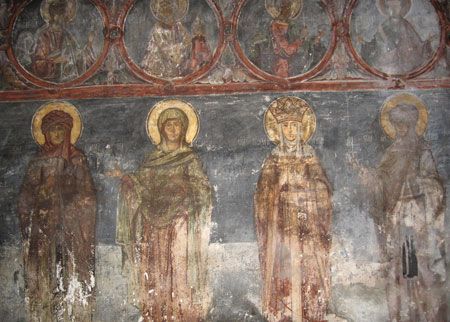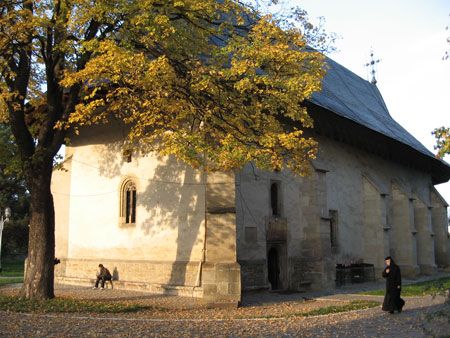The Bogdana Monastery in Radauti, Suceava, is one of the oldest of Romania and also one of the most interesting for researchers and lovers of sacred art, for it has preserved most of it's old decorations, architecture and charm. The church Saint Nicholas Bogdana is also the oldest stone structure of Moldavia which has kept it's original look, without any major alterations, which also makes it a historical monument. So it is no wonder that it has been indicted on the UNESCO list of World Heritage.

The church was built in around 1360 by Bogdan I (1359 - 1365) a ruler of Moldavia, on the place of an older church, and would not only be one of his most valuable initiatives, but also the monastery became the final resting place for the ruler and much of his family, several graves which can be visited today and have proven interesting for historians. Fortunatelly for the monastery and in a stark contrast with other places of worship, the Bogdana Monastery didn't see to many difficult moments in it's long history, apart from the natural ravages of time the whole complex is surprisingly well preserved. The monastery was closed down for a long time, but the church remained opened and in service, well preserved and taken care for.

This is one of the most impressive examples of traditional sacred architecture in the region, completed with Byzantine and Oriental influences, visibile especially when it comes to stone decorations and some elements of the paintings. The original construction was further enlarged in 1559, by Alexandru Lapusneanu, who also helped consolidate the church. It is an impressive mix of Roman, Gothic and Byzantine styles, a beautiful play with forms and shapes, at the same time following all of the religious precepts. For that era it was an ambitious and costly project, yet the masters, carpenters and masons managed to create something which was both durable and nice.

The first paintings were made in the 16th century, and Lapusneanu ordered that these original scenes were restored with great care. This also happened in the 18th and 19th century, when the test of time had proven to be way too much for the clarity and colours of the paintings. The result was surprisingly modern for sacred art, and is still visible how much care the artist had put into the compositions.
In 1775 the monastery was closed down by the Austrian occupants, but the St Nicholas Church stayed opened. The monastery itself would be reopened only in the winter of 1992, when the whole complex was in dire need of reconstruction, for the monks to be able to live here. Several of the interior elements and decorations were replaced, so was the roof of the church, all the time the restorers taking great care into preserving the original architecture and art. The result was of great value and quality. The bell-tower, for example, dating way back from 1781, was restored and consolidated and is still in use today. The frescoes, centuries old, have been restored as well and are strikingly beautiful due to their vivid colours and careful designs.
The Bogdana Monastery in Bucovina is not a very well known place, but is surprisingly beautiful, with a sacred architectural elegance which makes a visit here more than worth while. It is an occasion to rediscover the beauty of the places, of the church and the importance of religion in everyday life.
Photo : crestinortodox.ro
October 2008

































